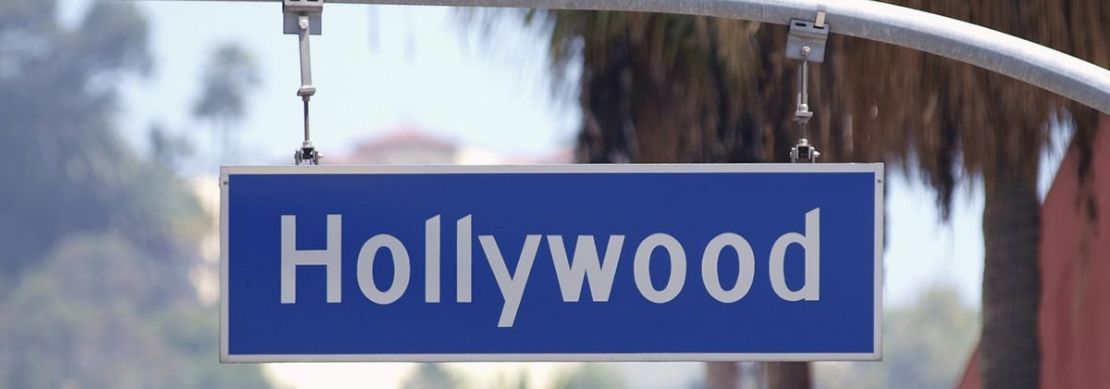See below exactly how much income you would need to earn in order to afford the principal, interest, taxes and insurance payments on a median-priced home in the 50 most populous metropolitan areas.
Key takeaways:
The first quarter of 2025 was a mixed bag for homebuyers. Mortgage rates stepped higher for a second quarter in a row, in many cases offsetting the affordability benefit that seasonally-lower home prices often bring. Thirty of the top 50 metropolitan housing markets saw lower home prices in the first quarter compared to the fourth quarter of 2024 while three markets were unchanged, but higher mortgage rates meant that relative affordability improved in just 12 of them.
Unlike the closing stanza of last year, the first quarter of 2025 saw no moves by the Federal Reserve, and in fact, trade and tariff upheavals that threaten to re-ignite inflation to some degree make near-term moves by the central bank highly unlikely. To be fair, economic fundamentals seemed to remain solid enough during the first quarter even though GDP posted a modestly negative reading, but the outlook for at least the near-term future has dimmed somewhat.
Existing home sales during the first quarter flared higher then retreated. Pending final revision, the National Association of Realtors reported that existing home sales posted annualized monthly rates of sale of 4.09, 4.27 and 4.02 million respectively in the first three months of 2025. As all of 2024 saw sales at roughly 1995 levels, it's safe to say that the start for this year really saw little or no improvement over that muted pace.
Odds are increasing that despite a soft pace of sales that we'll see a new record high for existing home prices again later this year. While the cost of an existing home may have been lower on a quarterly basis across a majority of markets, that was not the case when current costs were compared against year-ago marks, the most common reference. This reduced the number of metro areas with lower costs to just four, with two markets in Texas, one in Florida and one in Colorado seeing reductions. Nationally, the median price of an existing home sold in the first quarter of 2025 was $402,300, some 3.4% higher than the same period a year ago.
Home prices often rise strongly in the second quarter of the year, and at least based on the last nine years of observations, both the median and average increase for the period are above 9.5%. Even if this year's second quarter increase should only match the average of the last two (8.47%), the median second quarter price will rise to over $436,000, besting the old high-water mark (June 2024) handily. If mortgage rates don't find some space to retreat for the period -- and so far in the second quarter they have not to any great degree -- home affordability will diminish further again.
Outside of a major change in the economy, to current buyer demographics or a huge shift in the supply of available homes for sale, it's simply not likely that home prices will outright decline in the aggregate or by very much, even if prices in some housing markets seem to be settling somewhat. At best, buyers can hope that price increases flatten out over time while their incomes rise and mortgage rates decline all at the same time, so that more balanced buying conditions emerge. When these components might come together in beneficial fashion is anyone's guess at this point, but it doesn't seem likely we'll be seeing them very soon. Only time will tell.
With their leveraging effect, lower mortgage rates are more important in the affordability calculation than are lower home prices. In the current "national" calculation, buying a $402,300 median home price with a 20% down payment ($321,840 loan amount) using a 30-year mortgage with a rate of 6.83% requires an annual income of $108,485.65 to qualify once typical tax and insurance costs are included. Even if we adjust the Census Bureau's most recent 5-year running estimate of family income of $96,401 (per the American Community Survey, 2023) by 4% for 2024, this only lifts the income figure to a little over $100,000, still well short of the amount needed to qualify to buy that median-priced home (at least nationally, as if such a home existed).
Home Price Trends
Home prices typically fade in the fourth quarter of each year, presenting opportunistic homebuyers with a chance to save a bit of money compared to those shopping during the busier spring and summer months. After the calendar turns, they begin their seasonal climb, and it's common to see fewer markets with lower prices even compared to the final quarter of the previous year. This was the case again this year, as the 40 metro areas with quarter-to-quarter price declines in the fourth quarter of 2024 gave way to just 30 that saw reduced prices to start 2025, with three metro areas remaining unchanged.
This meant that 17 metros saw an increase in prices again (up from 10 in 4Q24), although just four posted increases of any magnitude. Conversely, there were some notable sequential declines, though, led by the Los Angeles metro's quarterly decline of 8.20%, followed by Buffalo (-8.01%), Detroit (-6.10%) and a few others. Homebuyers in those markets during the first three months of 2025 got relative deals, but as prices in most areas remain close to record highs, it's not as though those homes were exactly inexpensive.
This is especially true when looking at the more common year-over-year comparison. By this reference, just four of the top 50 metro housing markets actually had lower median sales prices this year than last, including Tampa/St. Petersburg FL, Denver CO, Austin and San Antonio, TX. Each of these metros may be seeing a more appreciable cooling trend for prices, as they have recorded year-over-year price decreases in each than the last three quarters or more.
Even for markets that are experiencing ongoing declines in home prices, the news isn't all that concerning. While they may be retreating from peak levels, softening home costs are only returning to previous highs and would only cause a homeowner a loss if a) they bought near or at the peak prices of just a year or two ago, and b) need to sell the home already (possible, but somewhat unlikely given the short time horizon). As well, and by example, someone who bought a home for $100,000 in Austin TX in 2018 is still seeing about a 65% increase in value since then, although that's perhaps less gratifying than the 84% increase at the recent peak for values in that market.
Salary Situation
Compared to the fourth quarter of 2024, relative home affordability improved in just 12 of the top 50 housing markets, a decline of slightly more than half compared to the fourth quarter of 2024. Home prices starting their seasonal climb coupled with mortgage rates that firmed up again were the culprit, as rising interest rates caused higher income requirements even in many markets where home prices were lower.
There were only considerable decreases in the income needed to purchase a median-priced home in 7 of the 12 metros that saw a reduction; most notable was the Los Angeles metro area, where a drop in home costs helped the income needed to buy that home decline by more than $13,000 compared to the fourth quarter of 2024. The Buffalo-Cheektowaga metro was next closest to that improvement in affordability, but the decline in income needed was a comparatively small $3,580. A few other markets managed an affordability improvement of more than $2,000, but the rest sported technical but fairly insubstantial improvements.
Unlike the fourth quarter of 2024, there were no annual declines in the income needed to buy a home in any of the nation's 50 largest housing markets, and, in fact, some of the increases were fairly considerable. If you bought a home in the NYC metro area in the first quarter of 2025, you needed 8.61% more income this year ($16,027) compared to the same period a year ago. The same Los Angeles metro are that saw a $13,000 quarter-to-quarter improvement in affordability also saw a 5.53% -- $11,453 -- year-over-year increase in the income needed to buy that median-priced existing home. Twenty-three metros in total saw required income increases in excess of 5%, and with wages only growing at perhaps a 4% clip over the last year, homebuyers in these markets likely fell further behind the affordability curve.
On a national basis, the income needed to purchase a theoretical nationally-priced home was lower in the first quarter than the fourth by just $184.80 ($108,485.65). However, compared to the first quarter of 2024, it was actually $4,191.10 more -- about a 4.02% increase -- so income growth just about kept pace with the national home price increase.
Inventory Issues
After years of ultra-lean inventories of homes available to buy, supply conditions are finally improving. Slack sales and a somewhat greater willingness of homeowners to put their homes up for sale is starting to change the picture somewhat.
Inventory levels of homes available to buy are measured against the present rate at which they are selling, called an inventory-to-sales ratio. While useful, this measure can be misleading, since a fall off in demand -- such as might happen when mortgage rates suddenly or continually rise -- can bloat the figure upward even if no additional homes for sale come to market.
The National Association of Realtors reported that inventories in March continued to improve from their usual seasonal nadir, rising to 4 months of supply available at the present rate of sale during the final month of the quarter. While still thin, it is a improved compared to last March (3.2 months) and within shouting distance of the highest inventory levels since before the pandemic (excluding the initial "pandemic shutdown" months in early 2020). Spring is the time when more homes for sale come onto the market, but sales remain sluggish, so the inventory-to sales ratio will probably improve somewhat more yet.
It is said that the "lock-in effect" -- homeowners unwilling to sell and trade a low-rate mortgage for a higher one -- is a key factor in why there are so few existing homes for sale. While that is likely true, it's also true that home prices are also significantly higher now then they were over the last couple of years, and there's a reasonable likelihood that many wanna-be sellers would have difficulty qualifying for today's more expensive homes even if mortgage rates were measurably lower. Even a being able to make a large downpayment on a next home might not be enough to even keep the amount being financed the same, let alone lower, so there is no offset to (or relief from) the higher mortgage rates in the market today compared to a few years ago.
As well, even if they can meet the challenge presented by higher rates and higher home costs, sellers may face the same little-desirable-to-buy situation that buyers without homes face, and so must wait until conditions become better balanced for their needs. It's not quite a chicken-or-the-egg situation, but a combination of smaller step-up in mortgage payment (either lower rates or prices, or a combination of both) or more suitable or viable homes to buy at present prices is going to be needed over time to restore a more properly functioning existing housing market.
At least one saving grace for some sellers is that they may be able to explore avenues that have fewer barriers and better actual availability of homes for sale. For example, a seller looking to buy new construction doesn't face the limited inventory issue that continues to bedevil potential buyers of existing homes, and for that, many builders are offering price concessions and even financing assistance. Folks relocating away from crowded coastal real estate markets may also find better availability and value opportunities, too.
How much house will your income and debt-load support? You can run your own calculations with HSH.com's How Much House Can I Afford to Buy? calculator.
Downpayment Difficulties
Potential homebuyers chasing today's markets know the problem all too well. Rising home prices mean greater amounts of savings are needed to achieve even a small downpayment. Our calculations use a 20% down payment as a base, since this eliminates the complication of factoring for the costs of Private Mortgage Insurance, where premiums are dictated by the borrower's credit strength, size of the borrower's downpayment and choice of mortgage type and term.
Want to buy the first quarter's national median-priced home with a 20% down payment? You'll need to have amassed $82,460 in savings -- and this leaves out the need to accumulate funds for mortgage closing costs and any required reserves. Even for a highly diligent saver this amount will likely take years to amass, and by then, higher home prices will likely necessitate an even larger amount.
Although the national median home price was lower this quarter than last, it's still some 3.4% higher than the same period a year ago. As such, while the downpayment size to reach 20% of the median price is down just a bit (-$1,500) compared the fourth quarter, it is still $2,620 more this year than last. Even a diligent saver would have had to come up with an additional $50.38 per week on top of other savings just to keep pace.
At the risk of being discouraging, if someone could save $1,000 per month, it would take them nearly seven full years just to reach today's 20% downpayment level; saving at twice that rate would make it about three and a half years... but in either case, the downpayment goal line will surely have moved, again as home prices tend to rise with inflation over time.
Even someone looking to get in with a minimal 3% downpayment -- available on Fannie Mae's HomeReady and Freddie Mac's Home Possible programs (and 3.5% down for FHA-backed loans) would need $12,069 and $14,081 respectively. This would shorten the savings timeframe, but a smaller downpayment on that same median-priced home means both a larger loan amount and incurring mortgage insurance costs -- so a higher income is actually required to qualify.
If you're thinking of going with one of these low-downpayment options, you'll want to see how these choices will work over time by using HSH's Low Downpayment Mortgage Comparison Calculator. You'll be able to see the costs of non-cancelable FHA mortgage insurance against the cancelable PMI costs of Fannie and Freddie offerings over any time horizon you desire. We take into account risk-based loan-level pricing adjustments, too.
Potential homebuyers of more modest means looking to buy homes often struggle to come up with even a minimum downpayment and closing costs, especially in heated markets. Help making the jump to homeownership is often available but can be tricky to find if you don't know where to look. To help would-be homebuyers, HSH offers its database of Homebuyer Assistance Programs by state, where information about these valuable programs, vital website addresses, contact info and more can be found.























































